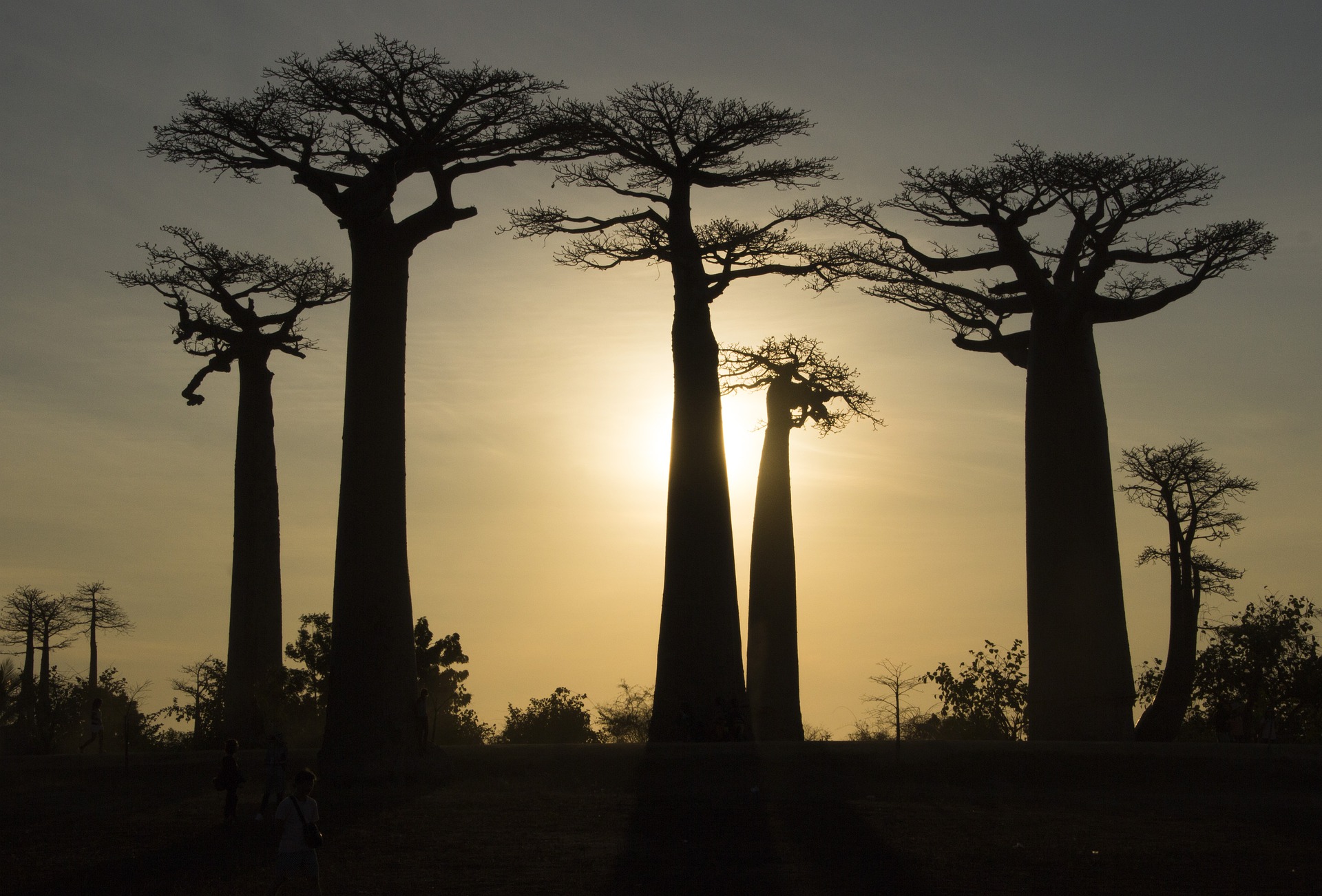Adventure • 09/02/2022
7 Things to Do in Madagascar

Revivalist is a reader-supported endeavor and our posts may contain affiliate links. When you buy through links on our site, we may earn an affiliate commission.
Nature lovers are bound to get lost in all of Madagascar’s points of interest. The beauty of its lemurs, infamous baobab trees, pristine beaches, jungles and plunging canyons. Of course, urban dwellers will delight in the capital of Antananarivo, which delivers a diverse culture, fascinating colonial history and excellent cuisine.
Located off the coast of East Africa, Madagascar is home to 25.6 million inhabitants and is the fifth-largest island globally.
Due to its remote location—and typically expensive flights—the country sees few visitors annually. In 2019, only 486,000 tourists made the trip. That makes this spot ideal for travelers who prefer a vacation without crowds.
Offering something for everyone, here are seven points of interest to consider when planning your next trip abroad to Madagascar.
1. Look Up in the Avenue of Baobab Trees
Baobab trees are enormous and can reach nearly 59 feet high with a trunk diameter of approximately 30 feet. They can also live to be more than 1,000 years old and certainly one of Madagascar’s points of interest.
For the last decade or so, baobab trees have been mysteriously dying off. Some scientists believe they may not be as drought-resistant as previously thought or are more susceptible to disease. They’re also listed as endangered due to increased clearcutting and agriculture.
Nevertheless, these majestic trees are unique to the Malagasy region and continue to be one of the country’s most impressive natural attractions.
The 853-foot-long Avenue of the Baobabs is located between Morondava and the Kirindy Mitea National Park along Madagascar’s west coast. Visitors can walk amongst the giants that line the road and snap plenty of photos, particularly during peak sunrise and sunset hours.
To get there, visitors can drive themselves, pay for a private guide or take a day tour through local travel companies. Aside from parking, there are no fees to visit the Avenue of the Baobabs. Plus, you can access it 24 hours a day.
2. Look for Lemurs
Tourists interested in wildlife will fall head over heels for some of the cutest lemurs they’ll ever lay eyes on.
Madagascar may lack primates, such as chimps, gorillas and monkeys; however, it’s home to 110 different species of lemurs, with more species discovered regularly.
There are many places tourists can check out lemurs during their trip. About an hour outside of Antananarivo is Lemurs’ Park, where you are guaranteed to see plenty of Madagascar’s furry residents.
You can also find lemurs in Ranomafana National Park near the town of Fianarantsoa. In addition to having 26 species of lemurs, the 41,600 hectares of Ranomafana’s tropical rainforest offer rich biodiversity that you can’t find anywhere else in Madagascar.
In addition to being surrounded by breathtaking mountain ranges and forests, visitors can relax after a long day of lemur watching and hiking by taking a dip in Ranomafana’s thermal pools.
3. Walk Along Nosy Be
Located just off the coast of Madagascar, Nosy Be—meaning “big island” in the Malagasy language—is a gorgeous, white-sand tropical escape with volcanic lakes, coral reefs, rum distilleries, luxury resorts, restaurants and more lemurs.
Additionally, there are many things to explore, and visitors can take advantage of island tours by car, kayak or boat. Nosy Be is an excellent spot for scuba diving and snorkeling, with clear blue waters and vibrant coral reef ecosystems. If you’re lucky, you may even see some sharks, turtles, dolphins and more of Madagascar’s points of interest.
While Nosy Be has beautiful beaches for those looking to take a break from their busy vacation itineraries, many visitors take a 90-minute boat ride to Nosy Iranja, as well. Connected by a narrow stretch of sand, Nosy Iranja is formed by two islets: Nosy Iranja Be and Nosy Iranja Kely.
When visiting Nosy Iranja, you may want to stop for a drink at the local resort, check out the turtle breeding grounds, go windsurfing or take in the stunning landscape.
4. Scuba Dive With Whale Sharks
Adventurists visiting Nose Be may look forward to scuba diving and snorkeling with whale sharks. A study published in the Endangered Species Research journal found that Madagascar has become a hotspot over the years for whale sharks to feed. In fact, researchers discovered that 85 whale sharks migrated to Nosy Be in one season.
Tourists looking to swim alongside Madagascar’s harmless whale sharks should consider doing so between September and December when most juveniles migrate to Nosy Be.
In addition to whale sharks, Madagascar is rich in other aquatic life. Divers and snorkelers are likely to see manta rays, humpback whales, sea turtles, and other marine mammals.
5. Visit Tsingy Rouge Park
The English translation of “tsingy” means “where one cannot walk barefoot,” and it’s a rather fitting name for the water-cut terrain of Tsingy Rouge Park. The park is very remote and widely undisturbed, making it difficult for many tourists to travel to.
Located in western Madagascar, Tsingy was named a UNESCO World Heritage Site in 1990. Jagged limestone carvings are what Tsingy is best known for, and there is no other place quite like it elsewhere.
According to the National Aeronautics and Space Administration (NASA), Tsingy began forming about 200 million years ago when water and wind cut into the limestone bed during the Pleistocene ice ages. Eventually, as the sea level fell and washed away, canyons began to form between rough peaks.
Coming from Antsiranana, it may take about two hours to get to Tsingy. For those who aren’t renting a car while visiting Madagascar, several tour services will bring you to see the site, some of which include food and lodging. Just be sure to wear comfortable shoes if you go.
6. Check Out the Views From the Royal Hill of Ambohimanga
The Royal Hill of Ambohimanga is another UNESCO World Heritage Site located just outside the capital city of Antananarivo. Situated on the top of a hill since the reign of Andriantsimitoviaminandriana (r. 1740–1745), it has long embodied the Malagasy culture, history, and spirituality. It’s also an important site of ancestral worship and pilgrimage.
Surrounded by a sacred landscape teeming with native species throughout the centuries, the Royal Hill of Ambohimanga has become a royal city and burial ground for former rulers.
History buffs will love visiting the hilltop palace while taking stunning photographs of the sweeping terrain.
7. Shop at the Markets in Antananarivo
Home to approximately 1.3 million people, Madagascar’s capital city of Antananarivo has a lot to offer to visitors who enjoy spending time in the hustle-bustle. Even with the traffic, you’ll find yourself falling in love with the city’s charming, colorful architecture, rich history and delicious cuisine.
Antananarivo is also the hub for some of Madagascar’s best markets. In Malagasy society, markets have always been a place where people can shop and meet up.
The Pavillon Analakely is a popular market where you can purchase anything from fresh produce and meats to essentials like clothing, shoes, bridal gowns, accessories and toys. Other goods also include medicinal herbs and cookware.
Another famous market is the Ambohijatovo, the perfect place for book lovers. Visitors can shop for books with 150 different booksellers that span several languages and eras.
Depending on when you visit, you may be able to walk through other markets that sell jewelry, imported goods from China and flowers.
A Unique Vacation Full of Surprises
Madagascar’s points of interest may not be the first on your list of top destinations, but you may want to think about booking a flight soon. Whether you go to get lost in nature, have a lemur sit on your shoulder or walk the white-sand beaches that border its coastlines, visiting this East African island will deliver a vacation full of surprises.
Subscribe to Our Weekly Newsletter
We would love to connect deeper with you!


